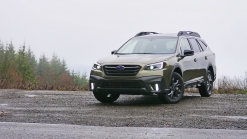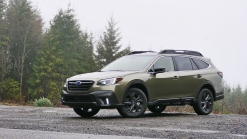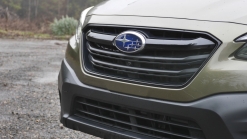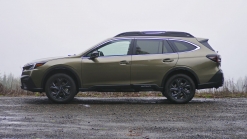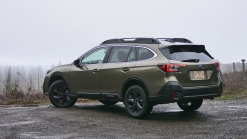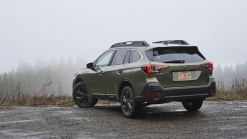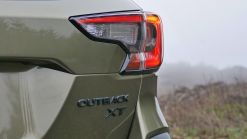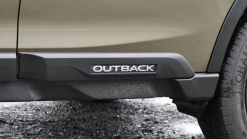2021 Subaru Outback Review | Price, Features, Specs And Photos
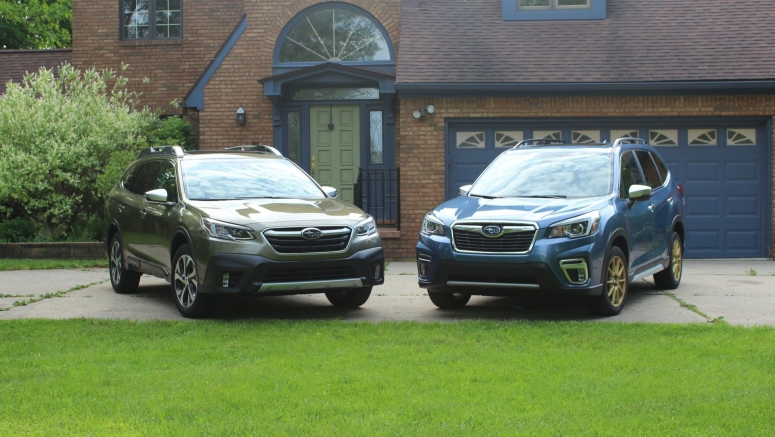
The Subaru Outback has always been different. At first, it was weird for a wagon since it had standard all-wheel drive, a ride height lift and rugged styling flourishes. Today, it's weird simply for being a wagon – all others have effectively disappeared, and it really only competes with small crossovers.
And against those, the 2021 Subaru Outback makes a tremendous case for itself. Though it rides high off the ground with more clearance than the vast majority of SUVs, it's ultimately still lower overall, making it feel more carlike when behind the wheel and making for easier loading for roof-mounted equipment. Its longer wheelbase provides a smoother, more sophisticated ride as well as more space between seating rows. Its cargo area is also shockingly voluminous.
Throw in its abundance of safety and infotainment tech, standard all-wheel drive, solid reliability ratings and improved interior quality with last year's redesign, and you have a vehicle that's easy to recommend. We even deemed it a superior choice to Subaru's own compact crossover, the Forester.
After being completely redesigned last year, the Outback gains two new standard features for 2021: steering responsive LED headlights and a rear seat reminder that alerts you to check in the back seat for children before exiting the car.
Nearly every 2021 Outback comes with a vertically oriented 11.6-inch touchscreen (and even that lone exception comes with a pair of 7-inch units, pictured above right). Its functionality isn't flawless, as the audio controls when using Apple CarPlay are compromised, and the colorful graphics are a bit cartoonish and have an aftermarket look to them. Still, it's generally easy to use, read and reach. Feature content is excellent as well (see pricing and features section below). Unfortunately, typical for Subaru, stereo sound quality is poor.
In terms of design, we can't say the interior is especially attractive, but materials quality is stronger than it was in the past. The buttons and switches have a high-quality feel to them, while even the base trim gets simulated leather stitched together on the dash, doors and center console. There's also a welcome injection of color found in the Touring (tasteful brown leather pictured above) and the Onyx Edition pictured below (gray and black "StarTex" vinyl accented in electric green).
Think a wagon is smaller than an SUV? Think again. With its substantially longer wheelbase and overall length, the Outback exceeds the space you'll find in compact crossovers like the Honda CR-V, Toyota RAV4 and Subaru's own Forester. That's especially true in the back seat, which is wide and offers far more space between rows (this difference may not always show up on spec sheets, but you'll notice it in person). This is especially noteworthy for parents with rear-facing child seats.
Cargo volume, meanwhile, is exceptional. True, it’s a bit less with the back seat raised (32.5 cubic feet) than some larger compact crossovers (the CR-V, for instance), but their numbers are a bit deceiving since so much of an SUV's space is up high in the greenhouse where filling it can block rear visibility and pose a danger due to items flying forward. The Outback's space, by contrast, is more reliant on its generous width and depth. Its maximum cargo capacity with the seats down also provides greater length, countering the extra height of SUV competitors. In our experience, this makes the Outback more useful overall.
Even better, the Outback also includes unique roof rails that swing inward to become their own crossbars (pictured above). No need to keep crossbars somewhere in the garage when not in use, or keep them in place to the detriment of noise and fuel economy. There are also sturdy tie-down points front and back, and since the Outback's roof is lower than an SUVs, it's easier to load stuff up there.
The Outback comes standard with a 2.5-liter horizontally opposed "Boxer" four-cylinder that produces 182 horsepower and 176 pound-feet of torque. This amount is mid-pack when compared to most compact crossovers. Midsize crossovers like the Honda Passport have far more standard power, but also get worse fuel economy. The base Outback engine returns 26 mpg city, 33 mpg highway and 29 mpg combined, which is excellent considering every Outback comes standard with all-wheel drive. A continuously variable transmission (CVT) is also obligatory.
The upgrade engine is designated by the name XT and is available on the Limited, Onyx Edition and Touring trim levels. It’s a turbocharged 2.4-liter boxer-four that produces 260 hp and 277 lb-ft of torque, which is a far more compelling output. It's definitely a box to check if you plan on putting all that space to good use and especially if it'll happen at altitude, where naturally aspirated engines lose power. Turbo engines aren't as susceptible to thinner air. Fuel economy can still be quite good with estimates of 23 mpg city, 30 mpg highway and 26 mpg combined, but in real-world driving, we've found Subaru turbo engines to get worse than the numbers would suggest.
The Outback's steering is quite numb on center, which doesn't promote a sense of driver-machine control. It's easy to turn at low speeds, and actually well-suited to loose off-road surfaces, but for those hoping a wagon will be more involving to drive than a small SUV, the steering is a real letdown. That's a shame, because even if the Outback is quite large, you can also tell that it's lower and wider than the small SUVs it's bound to be compared with. That's a good thing for those of us who prefer the feel of driving a car and being a bit lower to the ground (even if at 8.7 inches, the Outback has more ground clearance than most SUVs). Its longer wheelbase also helps provide a smoother, more composed ride.
The base engine provides sufficient power, and the CVT helps keep revs relaxingly low at dawdling, around-town speeds. Push it, however, and this engine quickly loses steam and wails as the CVT does its best to keep revs beneficially high. Though it attempts to create a more traditional driving feel by simulating upshifts, it does so at unusual times that doesn't exactly mitigate the unusual feel and sound of a CVT. These attributes remain in the turbocharged XT, but are at least mitigated by the more powerful engine that doesn't have to work as hard. That said, the turbo engine is also a bit old school in its power delivery. It feels pretty pokey and slow until about 3,000 rpm, and then bam, the turbo kicks in. We're guessing this is more the result of promoting good fuel economy by limiting boost at low rpm rather than old-fashioned 1980s turbo lag.
Subaru uniquely sells two similarly sized crossovers: one more wagon-like, the other more SUV-like. We test them side-by-side.
